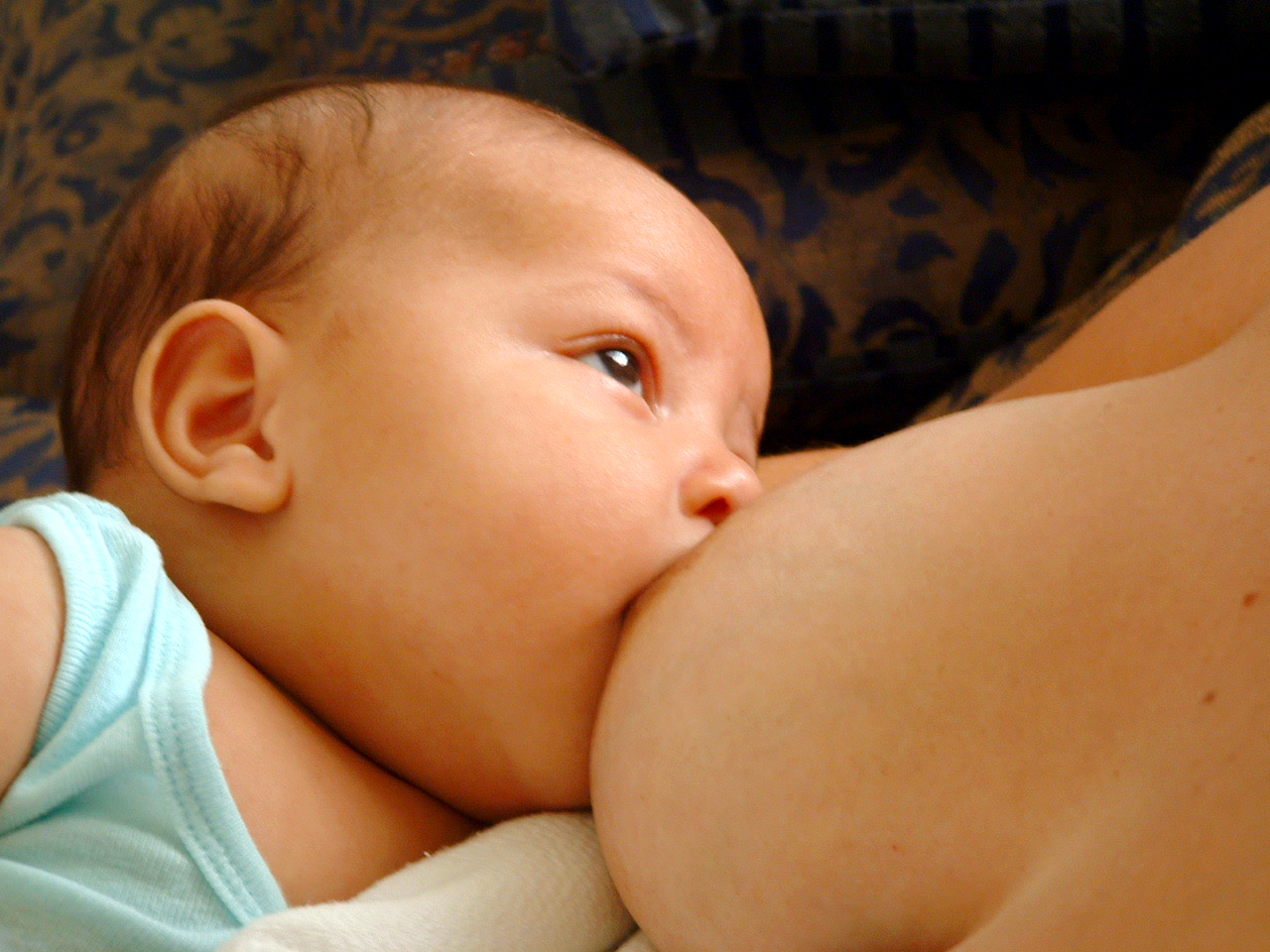New PHAC Breastfeeding Resources
 October 1-7 was World Breastfeeding Week in Canada, a time to recognize and celebrate the importance of breastfeeding in promoting the health of children, women and families.
To commemorate the date, the Division of Children, Seniors and Healthy Development highlighted some newly available breastfeeding promotion resources, including Protecting, Promoting and Supporting Breastfeeding: A Practical Workbook for Community-Based Programs (2nd Ed). Developed in collaboration with the Breastfeeding Committee for Canada, this resource aims to provide practical, best practice strategies to promote breastfeeding within a community setting, with a special focus on supporting vulnerable populations. A description of the workbook was previously featured in the June edition of Keeping in Touch.
October 1-7 was World Breastfeeding Week in Canada, a time to recognize and celebrate the importance of breastfeeding in promoting the health of children, women and families.
To commemorate the date, the Division of Children, Seniors and Healthy Development highlighted some newly available breastfeeding promotion resources, including Protecting, Promoting and Supporting Breastfeeding: A Practical Workbook for Community-Based Programs (2nd Ed). Developed in collaboration with the Breastfeeding Committee for Canada, this resource aims to provide practical, best practice strategies to promote breastfeeding within a community setting, with a special focus on supporting vulnerable populations. A description of the workbook was previously featured in the June edition of Keeping in Touch.
The booklet is intended to assist communities to identify strategies and specific actions to protect, promote and support breastfeeding in a population health context. The booklet is designed as a tool in achieving the global goal: Exclusive breastfeeding for the first six months, and continued to two years or longer, with appropriate complementary foods.
The language level of the booklet varies in order to accommodate the diverse needs of collaborative teams involving a spectrum of professional and lay workers.
The workbook focuses on nine strategies to support, promote and protect breastfeeding. For each strategy a number of potential application suggestions are offered. The format also includes: “Stories”, giving examples of actions or activities that groups have found effective to protect, promote and support breastfeeding; and “Food for Thought”, providing responses to questions and challenging issues related to breastfeed that arise from time to time.
The nine strategies addressed in the booklet are:
- Create breastfeeding friendly sites
- Keep staff up to date
- Empower mothers to make informed decisions
- Respect the needs of mothers who choose not to breastfeed
- Identify barriers and explore solutions
- Sustain support beyond initiation
- Include families, partners and friends
- Encourage peer breastfeeding support
- Engage the community as a partner
THE VISION
A Breastfeeding Friendly Community would feature the following:
- All hospitals and community health agencies delivering maternity services are designated “Baby Friendly” by the BCC or provincial BFI Authority.
- All heath care facilities and community agencies protect, promote and support breastfeeding.
- Health care institutions and community health agencies work together to increase the availability of breastfeeding support.
- Education is provided about breastfeeding as the natural and normal method of infant feeding.
- Information is given to the community as a whole about the importance of breastfeeding and the risks of not breastfeeding.
- Attitudes within the community that perceive bottle-feeding as the norm are addressed and education is directed at changing these attitudes.
- Communities recognize the importance of supporting the mother-baby relationship.
- All public and private facilities including parks and recreation centres, restaurants and stores support the need to be mother and baby-friendly.
- Work settings promote breastfeeding through the provision of extended maternity leave and/or providing facilities for mothers to express milk and maintain their breastfeeding relationship.
- Support is given to women who do not meet their breastfeeding goals to resolve their feelings and to find the most suitable alternatives.
ADAPTED FROM: Jones F, Green M. British Columbia Baby- Friendly Initiative. Resources Developed Through the BC Breastfeeding Resources Project. Vancouver: BC Baby-Friendly Initiative, 1996 and updated in 2006.
The booklet gives current medical understanding in respect the following issues (updated information on these issues will be incorporated into following editions of the booklet, as knowledge is gained and clarified):
- Vitamin D: Should breastfed babies and mothers who breastfeed receive a Vitamin D supplement?
- Infant Formula: Should community-based programs participate in the purchase or distribution of infant formula?
- Incentives for Breastfeeding: Should the continuation of milk coupons or other maternal food supplements after the baby is born be tied to a mother’s decision to breastfeed?
- Support for bottle-feeding mothers: What can I do to support mothers and babies who are bottle-feeding breast milk or formula?
- Cultural influences: How can I support mothers when cultural traditions are impacting breastfeeding?
Finally, the booklet offers an outline template for developing a Breastfeeding Plan with participants, suggested small group activities, and a set of historical and reference documents, and a set of Points to Consider When Evaluating Breastfeeding Resources.
Two promotional posters are also available for download in electronic (pdf) format: Breastfeeding is not just for newborns and Back to Work? You can keep breastfeeding.
